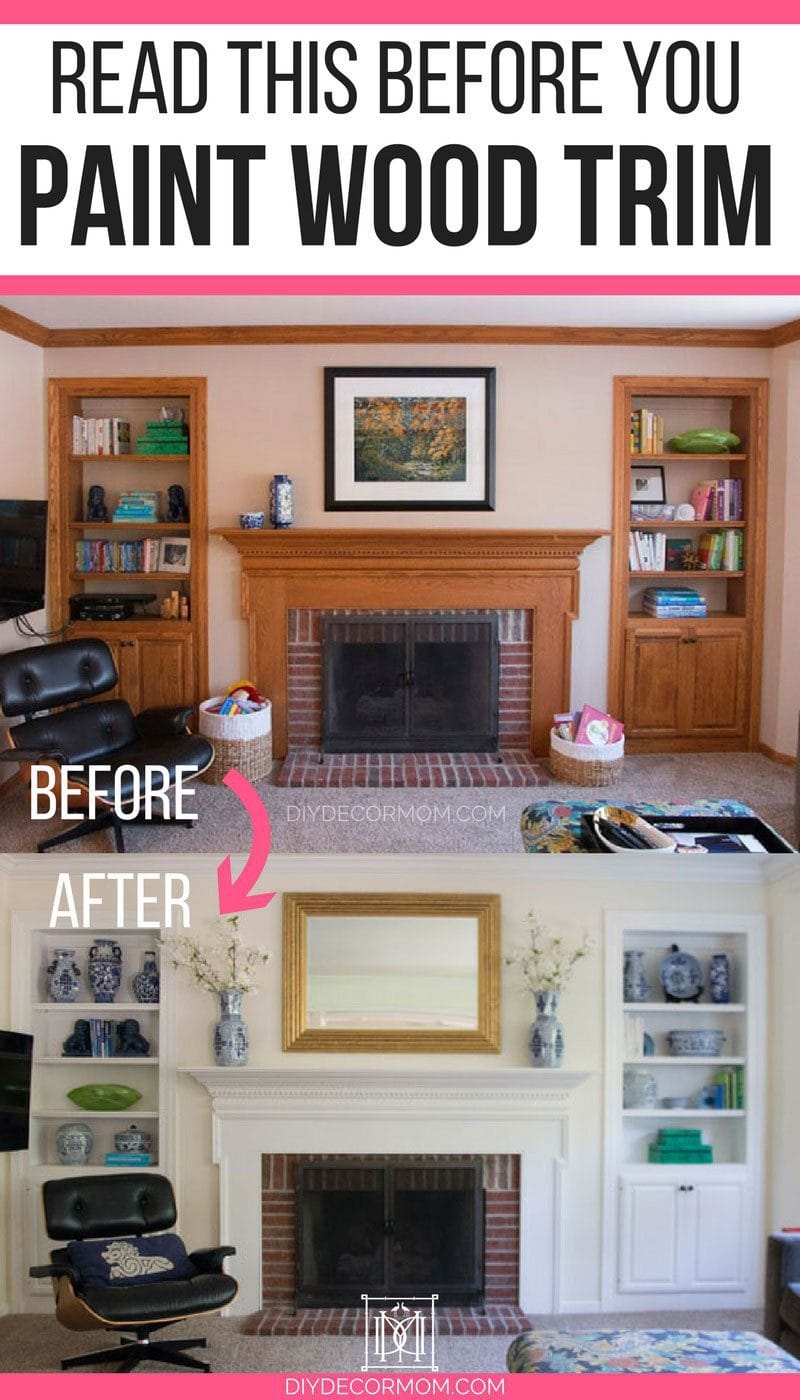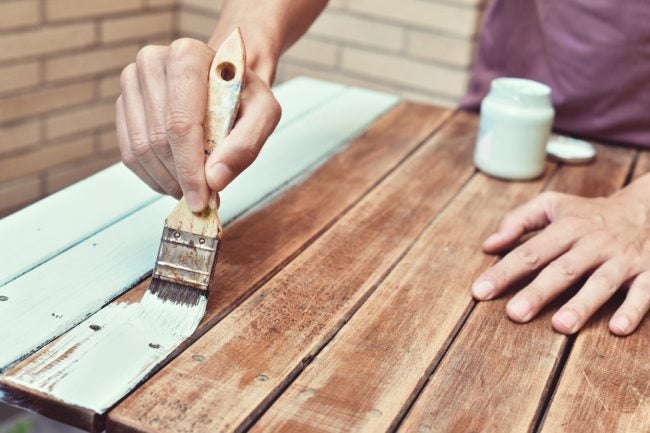Are you wondering if you can paint over stained woodwork? Well, you’re in the right place! Painting over stained woodwork can be a great solution to update the look of your home. In this article, we’ll explore whether it’s possible to paint over stained woodwork, and if so, how to do it properly. So, let’s dive in!
Painting over stained woodwork may seem like a daunting task, but with the right approach, it can be easily accomplished. Whether you want to transform the color of your woodwork or hide imperfections, painting can give your space a fresh and updated look. But before you grab that paintbrush, let’s discuss the key considerations and steps involved in the process to ensure a successful outcome.
So, can you paint over stained woodwork? The answer is a resounding yes! With the right prep work and materials, you can achieve a beautiful and long-lasting finish. In the following sections, we’ll delve into the necessary steps and techniques to ensure a successful painting project. Get ready to give your stained woodwork a new lease on life with a fresh coat of paint!
Looking to update your stained woodwork with a fresh coat of paint? You can definitely paint over stained woodwork with the right preparation. Here’s how:
- Clean the surface with soap and water.
- Sand the woodwork to remove any glossy finish.
- Prime the surface to ensure proper adhesion.
- Apply your desired paint color with a brush or roller.
- Allow the paint to dry completely before applying a second coat if necessary.
Following these steps will help you transform your stained woodwork into a fresh, painted look.

Can I Paint Over Stained Woodwork?
When it comes to updating the look of your home, one common question that many homeowners have is whether it is possible to paint over stained woodwork. Stained woodwork can create a beautiful, natural look, but it may not always fit with your desired aesthetic. Fortunately, painting over stained woodwork is not only possible but also a relatively straightforward process. In this article, we will explore the steps involved in painting over stained woodwork and provide you with tips and tricks to achieve the best results.
The Benefits of Painting Over Stained Woodwork
Painting over stained woodwork can offer several benefits, making it a popular choice among homeowners looking to update their interiors. Firstly, painting allows you to completely change the color of your woodwork, giving you the freedom to match it with your preferred color scheme or to create dramatic contrasts. Additionally, painting can help hide any imperfections or blemishes on the wood, such as scratches or water stains, giving it a fresh and revitalized appearance. Furthermore, painting over stained woodwork can be a cost-effective alternative to replacing the wood entirely, saving you time and money.
Preparation: Steps to Paint Over Stained Woodwork
Before you start painting over stained woodwork, it’s crucial to ensure that the surface is properly prepared. Follow these steps to achieve the best results:
- Clean the Surface: Start by thoroughly cleaning the woodwork to remove any dust, dirt, or grease. Use a mild detergent and warm water, and scrub gently with a soft cloth or sponge.
- Sand the Wood: Next, sand the woodwork to create a smooth and even surface for the paint to adhere to. Use fine-grit sandpaper and sand with the grain of the wood. Be sure to remove any dust or debris after sanding.
- Apply Primer: To ensure proper adhesion and to prevent any stains from bleeding through the paint, apply a high-quality primer suitable for wood surfaces. Use a paintbrush or roller to apply the primer evenly, following the manufacturer’s instructions.
- Painting: Once the primer is dry, it’s time to paint! Choose a paint specifically formulated for wood surfaces and your desired color. Apply the paint in thin, even coats, allowing each coat to dry before applying the next. Depending on the type of paint and the desired finish, you may need to apply multiple coats.
- Finishing Touches: After the paint has fully dried, carefully inspect the woodwork for any touch-ups or areas that require additional coats. Once you are satisfied with the results, consider applying a clear topcoat or varnish for added protection and durability.
The Importance of Sanding for Successful Results
Sanding the stained woodwork is a vital step in the preparation process. While it may be tempting to skip or rush through this step, it is crucial for achieving a smooth and professional-looking finish. Sanding not only helps remove any existing finish or sealant but also creates small grooves on the surface, allowing the paint to adhere better. It also helps to smooth out any imperfections, ensuring that the final coat of paint goes on evenly. Remember to always sand with the grain of the wood and clean up any dust afterward to ensure a clean surface before priming and painting.
Choosing the Right Paint for Stained Woodwork
When painting over stained woodwork, it’s essential to choose the right type of paint to achieve optimal results. Look for a paint that is specifically formulated for wood surfaces and is suitable for the specific project, whether it’s trim, doors, or furniture. Consider the desired finish, whether it’s matte, satin, or gloss, and select a paint color that complements your overall design scheme. A high-quality paint will not only provide excellent coverage but also offer durability and longevity, allowing your painted woodwork to withstand daily wear and tear.
Care and Maintenance of Painted Woodwork
To ensure the longevity of your painted woodwork, proper care and maintenance are essential. Here are a few tips to keep in mind:
- Regularly dust and clean painted woodwork with a soft, lint-free cloth or a gentle cleaner to remove any dirt or debris.
- Avoid using abrasive or harsh cleaning agents, as they can damage the paint finish.
- Touch up any scratches or chips promptly to maintain the appearance of the painted woodwork.
- Consider applying a clear topcoat or varnish as an additional protective layer for high-traffic areas.
- Protect painted woodwork from excessive moisture and direct sunlight, as these can cause the paint to fade or peel over time.
Revitalize Your Space with Painted Woodwork
Painting over stained woodwork is a fantastic way to transform the look of your home and add a personal touch to your space. With proper preparation, the right materials, and a little bit of patience, you can achieve stunning results. Whether you’re updating outdated wood trim or giving your furniture a fresh new look, the process of painting over stained woodwork can be a rewarding and enjoyable project that brings new life to your home’s interior.
Key Takeaways: Can I Paint Over Stained Woodwork?
- Yes, you can paint over stained woodwork with the right preparation.
- Clean the woodwork thoroughly before painting to remove dirt and grease.
- Sand the woodwork to create a smooth surface for better paint adhesion.
- Apply a coat of primer to help the paint adhere and prevent discoloration.
- Choose a high-quality paint designed for wood surfaces for the best results.
Frequently Asked Questions
When it comes to updating your home, painting over stained woodwork can be a great way to transform the space. Here are some commonly asked questions about painting over stained woodwork.
1. How do I prepare the stained woodwork before painting?
Before you can start painting over stained woodwork, it’s important to prepare the surface properly. Start by cleaning the woodwork with a mild detergent to remove any dirt or grease. Next, lightly sand the surface to create a rough texture that will help the paint adhere better. After sanding, wipe away any dust with a damp cloth and let it dry completely. Finally, apply a primer specifically designed for wood to ensure good adhesion and a smooth finish.
By following these preparation steps, you’ll create a clean and smooth surface that will make your paint job look professional and last longer.
2. What type of paint should I use to paint over stained woodwork?
When painting over stained woodwork, it’s important to choose the right type of paint. Look for a high-quality latex or oil-based paint that is specifically formulated for trim and woodwork. These paints are durable and provide good coverage. Latex paints are easy to clean up with water and have low odor, while oil-based paints offer a smoother finish and are more resistant to wear and tear.
Consider factors such as the location of the woodwork (indoors or outdoors), the type of wood, and your personal preference when selecting the paint. Always read the manufacturer’s instructions for proper application and drying time.
3. Can I paint over dark stained woodwork with a lighter color?
Yes, you can paint over dark stained woodwork with a lighter color. However, it’s important to note that the process may require a few additional steps. Start by applying a high-quality stain-blocking primer to prevent the dark stain from bleeding through the new paint. Once the primer has dried, you can proceed with painting the woodwork in your desired lighter color.
Keep in mind that you may need multiple coats of paint to achieve full coverage and ensure that the dark stain is completely concealed. It’s also a good idea to test the new paint color on a small, inconspicuous area of the woodwork before applying it to the entire surface.
4. Do I need to remove the existing stain before painting?
In most cases, you do not need to remove the existing stain before painting over stained woodwork. As long as the surface is properly cleaned, sanded, and primed, you can paint directly over the stained woodwork. The primer will help the new paint adhere effectively, ensuring a smooth and long-lasting finish.
However, if the existing stain is peeling or damaged, it’s recommended to remove it before painting. You can use a paint stripper or sanding techniques to remove the old stain. Make sure all remnants of the stain are removed, and follow the necessary cleaning and priming steps before applying the new paint.
5. How can I ensure a professional-looking finish when painting over stained woodwork?
To achieve a professional-looking finish when painting over stained woodwork, attention to detail is key. Take the time to properly prepare the surface by cleaning, sanding, and priming. Use high-quality brushes or rollers to apply the paint evenly and smoothly.
Apply thin coats of paint and allow each coat to dry thoroughly before applying the next. This will help prevent drips and achieve a smooth finish. Keep in mind that multiple thin coats will generally provide better coverage and durability than a single thick coat. Lastly, take your time and be patient. Painting over stained woodwork can be time-consuming, but the end result will be worth the effort.

Summary
Painting over stained woodwork is possible, but there are important steps to follow.
First, clean the wood thoroughly and remove any stains or varnishes. Next, apply a primer to help the paint stick. Finally, choose a paint color that matches your desired look and apply multiple coats for a smooth finish.
Remember to take your time and follow each step carefully to achieve the best results. So go ahead and transform your stained woodwork with a fresh coat of paint!
